15 Calming Plants That Can Help To Reduce Stress(Home & Office Uses)
Benefits of Indoor Plants for Stress Relief
The visual appeal of indoor plants is only one of their many positive attributes, they also provide a variety of other advantages, including relief from stress. Below is a list of some of the benefits of having indoor plants for relieving stress:
Improved Air Quality: Improved Air Quality You may enhance the air quality in your house or business by bringing indoor plants into the space. Because they take in carbon dioxide and give off oxygen, they contribute to the overall improvement of the air quality. This can contribute to the reduction of tension and the promotion of a sense of calm.
Relaxing Effects: It’s common knowledge that looking at or being around the color green may have a soothing impact on both the mind and the body. Indoor plants offer a natural supply of greenery that may contribute to the creation of a soothing ambiance, which in turn can help minimize feelings of tension and anxiety.
Natural Humidifiers: Indoor plants emit moisture into the air, which can help battle the dryness induced by heating and air conditioning systems. Natural Humidifiers, Indoor plants release moisture into the air. This can assist in preventing respiratory difficulties as well as providing a more pleasant atmosphere, which in turn helps reduce stress.
Increased Productivity: Studies have shown that increasing the amount of greenery in the office may enhance productivity as well as lower the amount of stress experienced by employees. This is due to the fact that they generate an atmosphere that is relaxing and contribute to the development of a sense of wellness, both of which aid in boosting attention and focus.
Enhanced Aesthetics: Indoor plants bring beauty and vitality to any place, which can serve to contribute to the creation of an environment that is more welcoming and pleasant. This can help relieve stress by providing an environment that is more aesthetically pleasing and comfortable to be in.
How Plants Can Improve Air Quality and Reduce Anxiety Through Aromatherapy?
Aromatherapy from plants’ VOCs (volatile organic compounds) improves air quality and reduces anxiety.
Air Quality: Plants purify the air. Photosynthesis removes CO2 and releases O2, improving indoor air quality. Snake plants and peace lilies may also remove formaldehyde and benzene from the air.
Respiratory Health: Plants help improve respiratory health. Plant scents, or phytoncides, relax the respiratory system. In COPD patients, inhaling the cypress tree smell improves lung function.
Anxiety Reduction: Plants reduce anxiety too. Plants and nature decrease stress and anxiety. Lavender and chamomile aromatherapy calms the mind and body.
Related Article – What is Calming Meditation – 7 Benefits of meditation
Sleep Improvement: Plants improve sleep. Plants aid sleep and alleviate insomnia. Jasmine and lavender contain calming properties that may relax and enhance sleep.
Related Article – Sleep Your Way to Success: Recommended Sleep Time Per Day
Stress Reduction: Plants reduce stress. Plants relieve stress and anxiety and boost mood and cognition. Horticultural treatment may also reduce stress and improve mental health.
Top 5 plants for aromatherapy and their benefits
• Peppermint: Reduces anxiety and stress.
• Jasmine: It promotes relaxation and better sleep quality.
• Rosemary: Reduces stress and improves mood.
• Eucalyptus: Relieves stress and improves respiratory health.
• Bergamot: Reduces stress and anxiety and promotes relaxation.
Calming Plants That Reduce Stress
Top 10 stress-reducing plants with their benefits
Jasmine

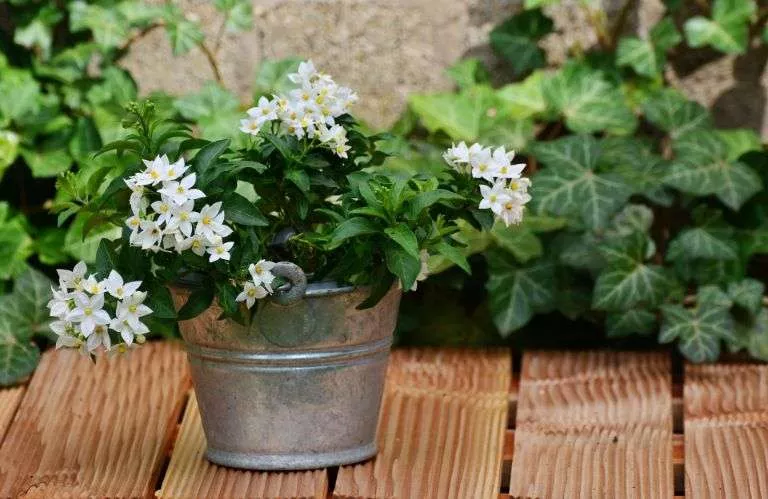
The relaxing effects of the jasmine plant’s fragrance extend to the mind and body. Aromatherapists have long relied on jasmine’s calming perfume to help patients unwind before bed.
The aroma of jasmine has been shown in several tests to have a calming effect on people. Participants in a research study who were exposed to a jasmine aroma rather than a control scent reported higher levels of alertness and lower levels of anxiety.
It has also been discovered that jasmine has a sedative effect, making it a useful aid in achieving a restful night’s sleep. Subjects who were exposed to jasmine aromatherapy during sleep reported significantly better sleep quality. The next morning, the participants felt more refreshed and alert.
Golden Pothos

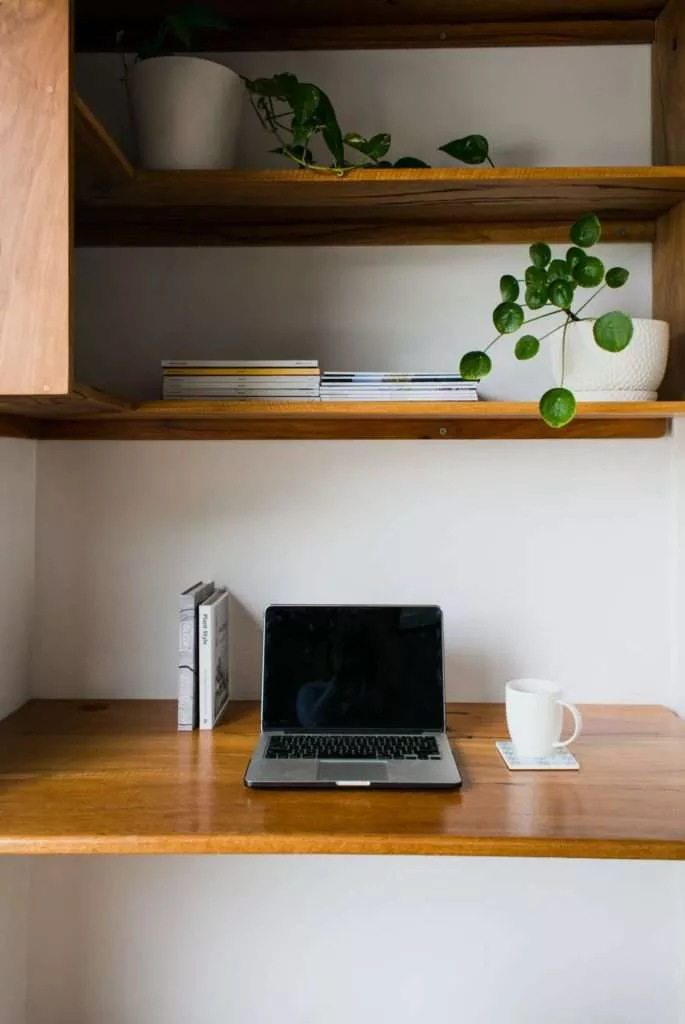
The Golden Pothos is a popular houseplant since it not only looks nice but also helps filter the air. It is effective in cleaning the air of formaldehyde, benzene, and carbon monoxide, making it a superb houseplant. The Golden Pothos is a low-maintenance plant that is perfect for novice gardeners or people who are short on time. It may be grown in dim to strong light and only need an inch of water each week, or when the soil is dry to the touch. It also thrives in a wide range of potting soils and seldom needs fertilizer.
Even though Golden Pothos can make a difference in indoor air quality, it is not a replacement for more traditional air filtration systems. Indoor air quality may be improved by the use of proper ventilation and the reduction of pollutant-emitting goods.
Spider Plant
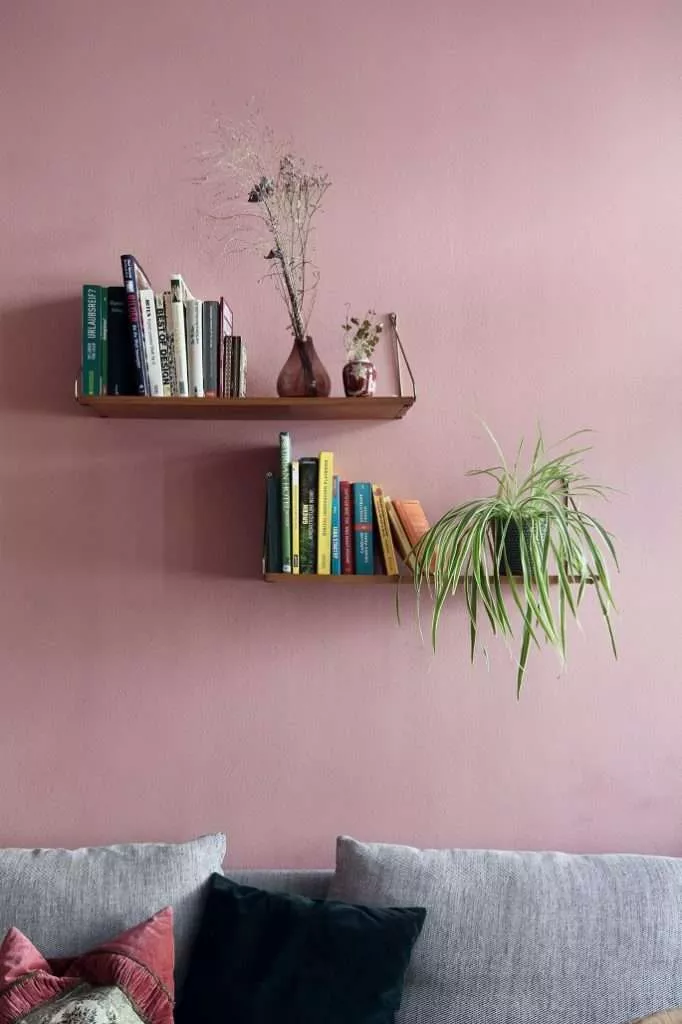
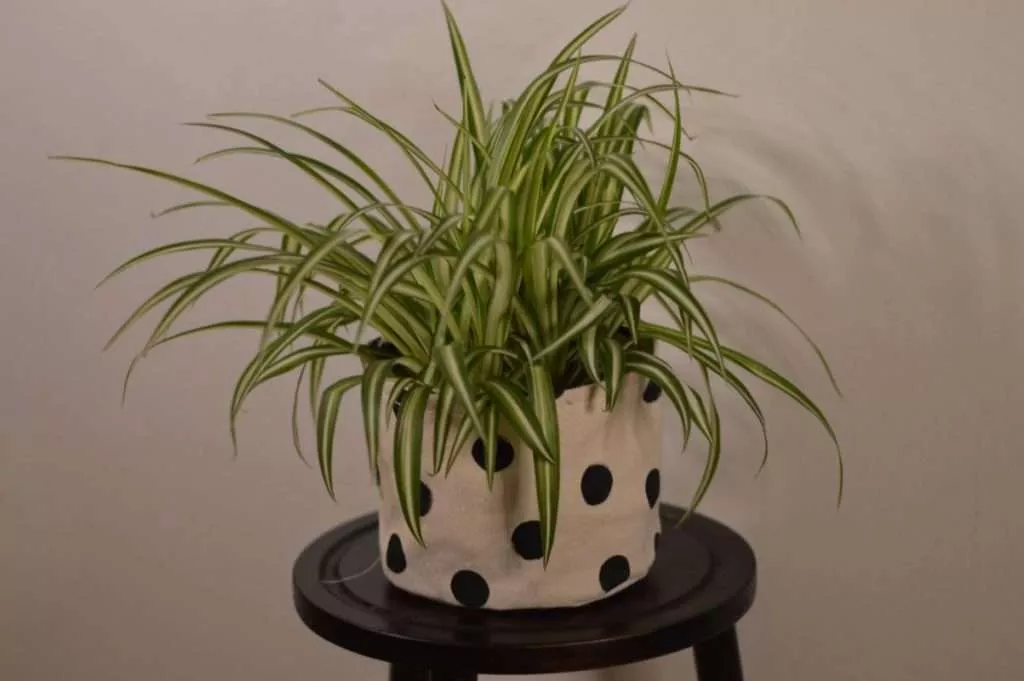
This makes them an excellent option for enhancing indoor air quality, particularly in areas prone to high levels of air pollution.
Indoor air pollutants including formaldehyde, xylene, and toluene are eliminated with their help. These pollutants may be released by commonplace items like furniture and cleaning supplies.
Spider plants were shown to be effective in removing up to 90% of formaldehyde from the air in a sealed room within 24 hours, according to a single study. Another study discovered that spider plants are effective at removing toluene from the air.
Snake Plant
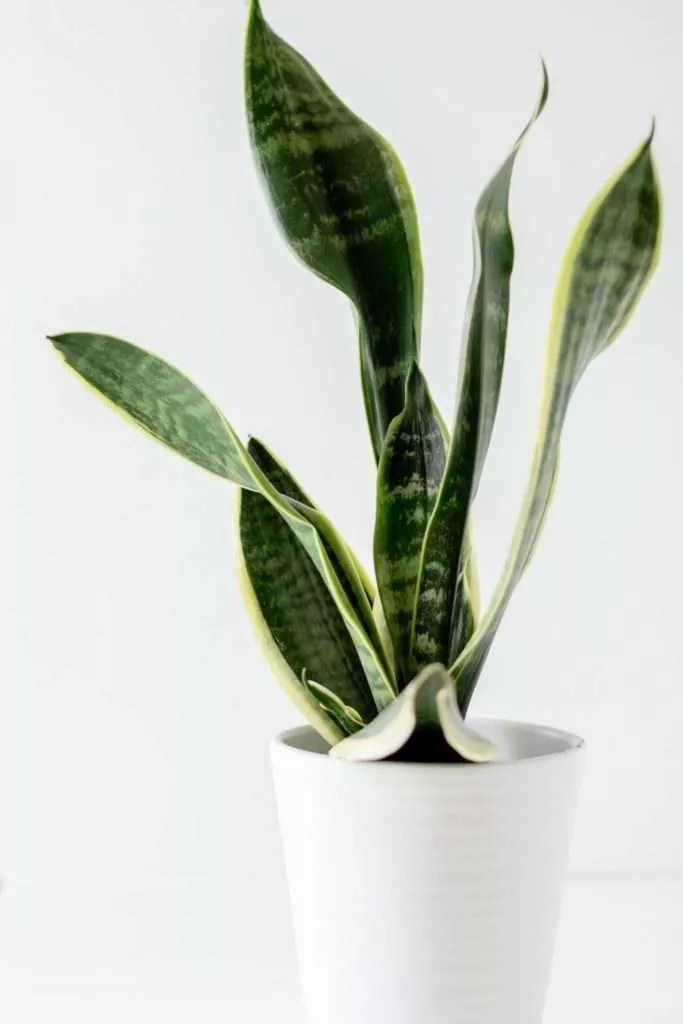
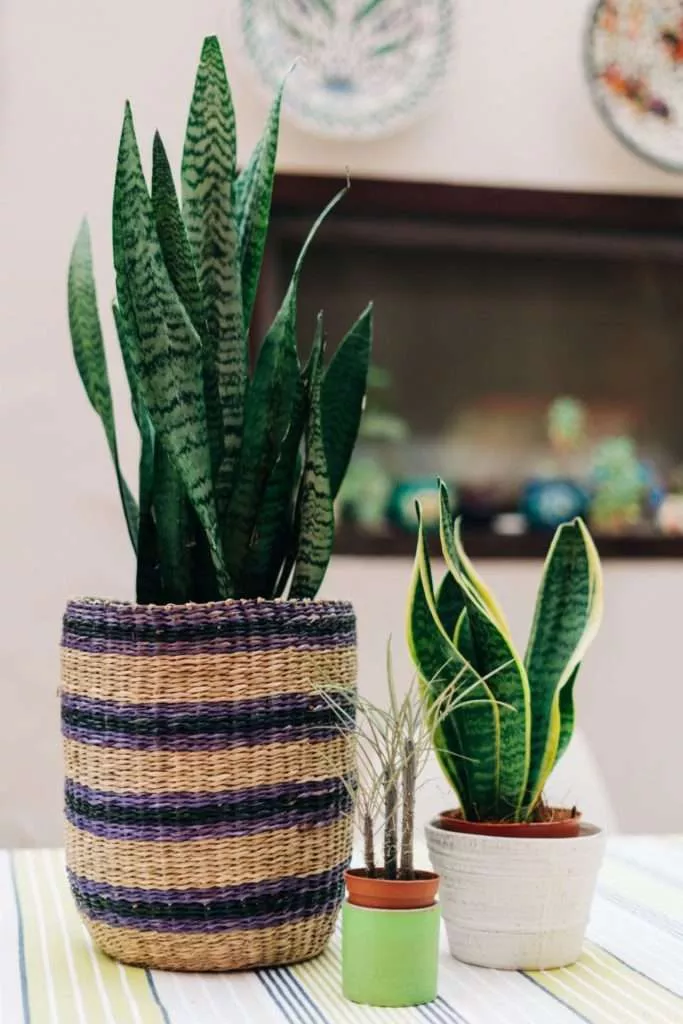
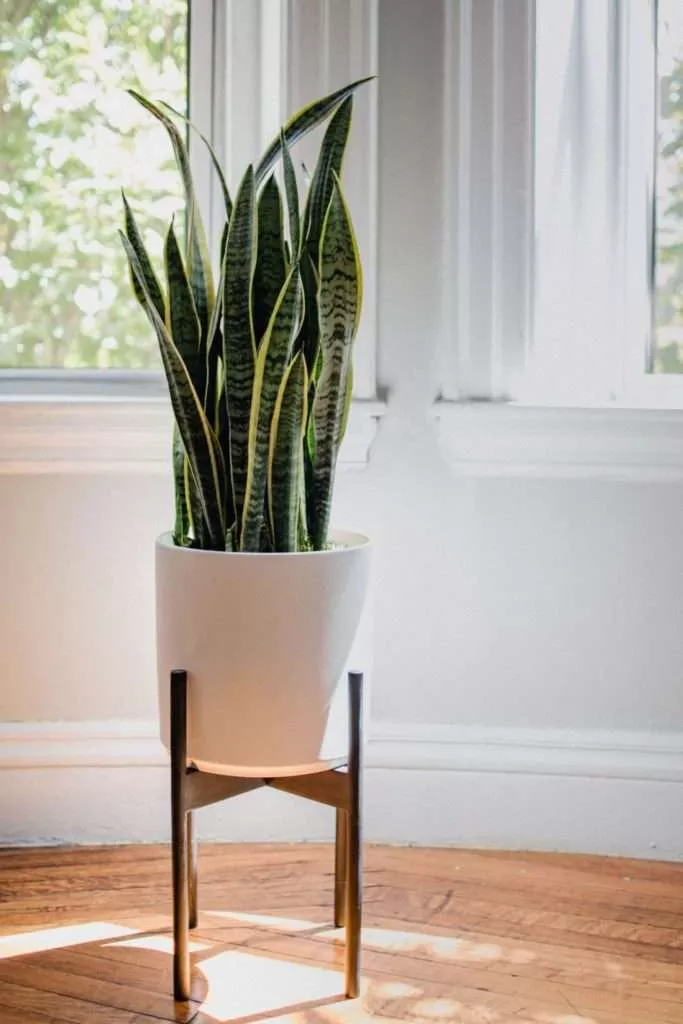
Snake plants convert carbon dioxide into oxygen at night, making them ideal sleeping plants. It boosts productivity, mood, and air quality. Snake plants are famous for organically improving indoor air quality because they are low-maintenance. They don’t need much water and can handle a variety of temperatures and light. Snake plants remove formaldehyde, and benzene from the air. They effectively remove formaldehyde, a prevalent indoor air contaminant generated by household items and furnishings. Snake plants create oxygen and increase humidity, which can assist respiratory health.
Snake plants are easy to care for and enhance interior air quality organically. They survive a broad variety of temperatures and light conditions and don’t need much water.
Aloe Vera
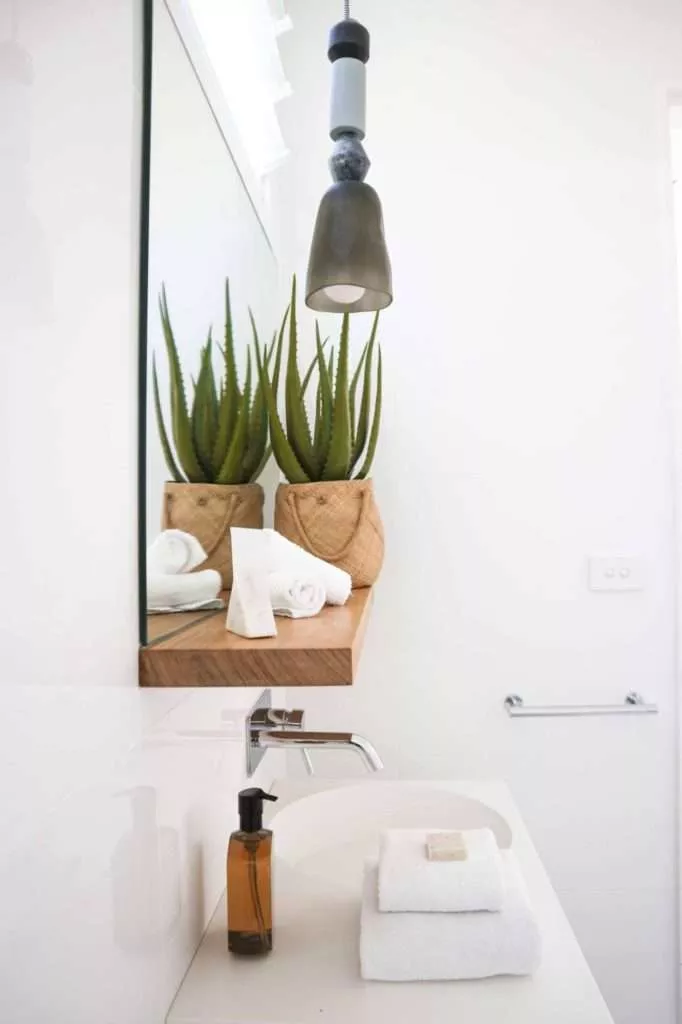
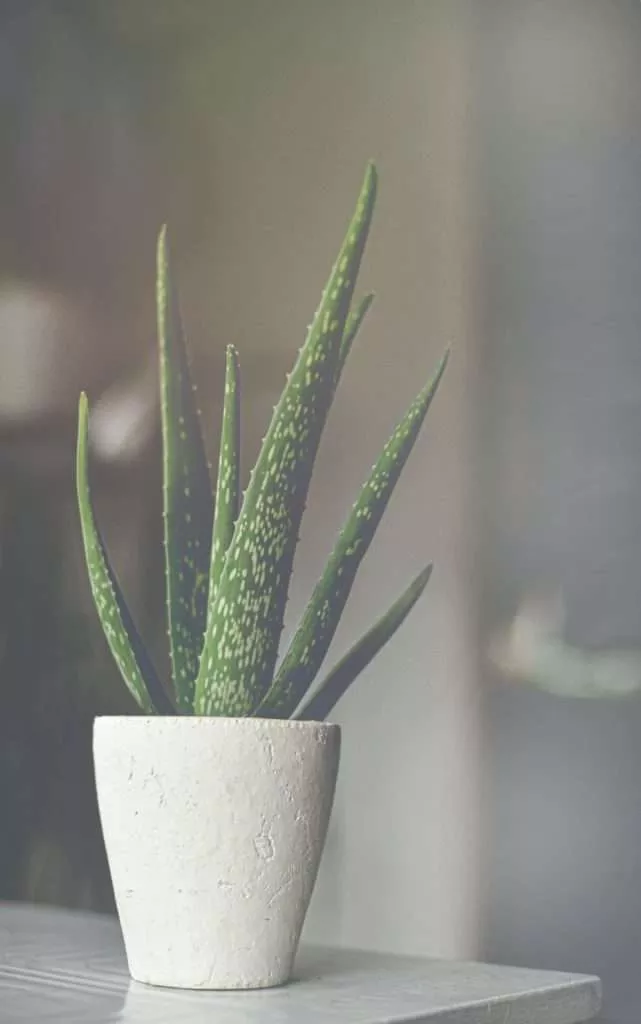
Aloe vera is a succulent plant native to Africa that is now farmed worldwide. The plant has fleshy, thick leaves with a gel-like texture. This gel is loaded with vitamins, minerals, and other elements that are good for your skin and health.
Aloe vera is a well-known plant with several health advantages. Because of its capacity to soothe and repair the skin, it is often used in skincare products. Aloe vera, on the other hand, can be healthy for calms. When combined with calming, aloe vera can help their overall health and well-being. Changes in salinity and temperature are two factors that might stress clams. Aloe vera can help calms minimize stress, improving their general health and well-being.
Aloe vera has been demonstrated to boost calm growth and survival rates when used with them. This can assist in improving the quantity of calms produced, which is good for both the ecology and the economy.
Bamboo Palm
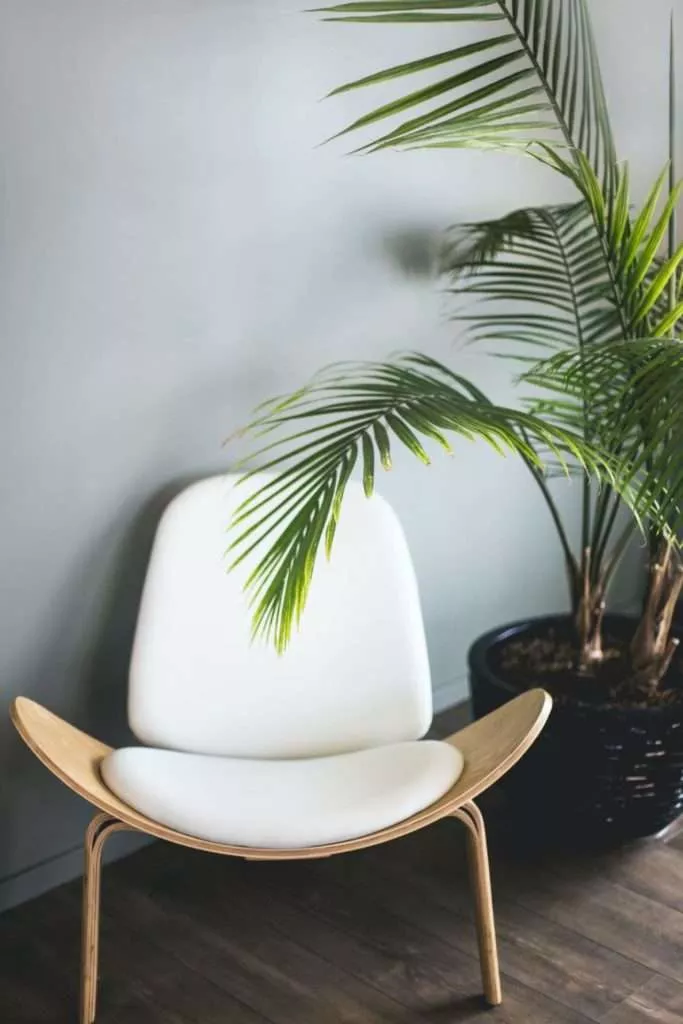
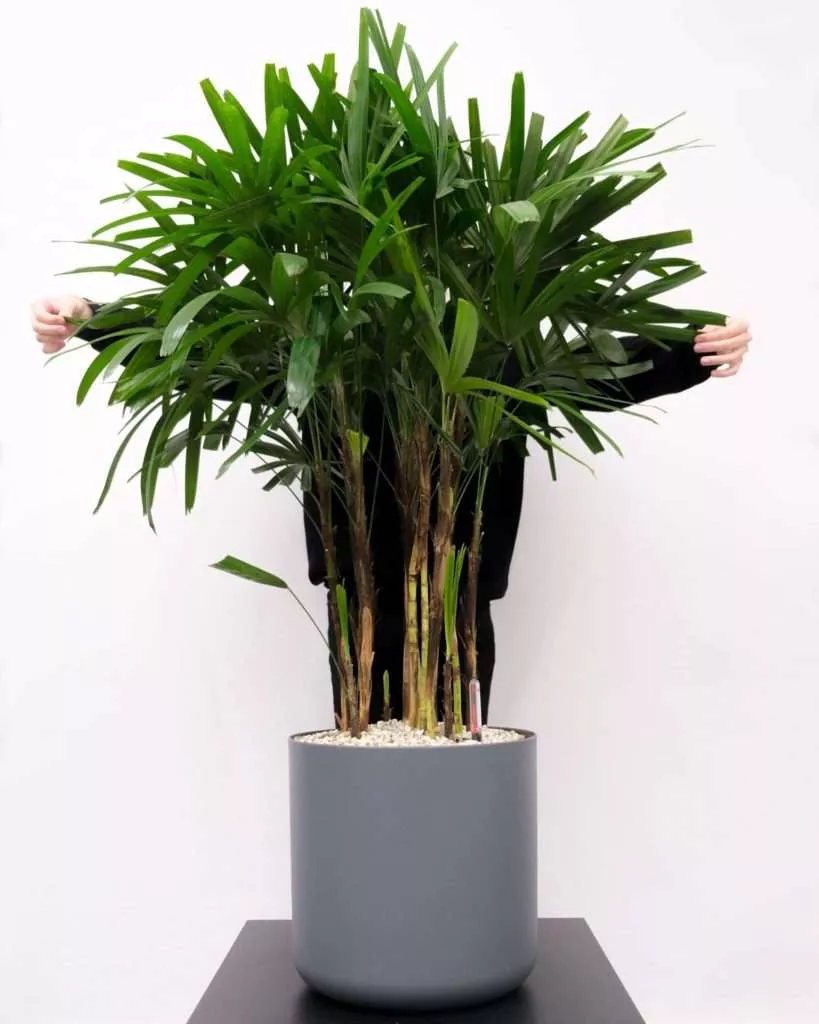
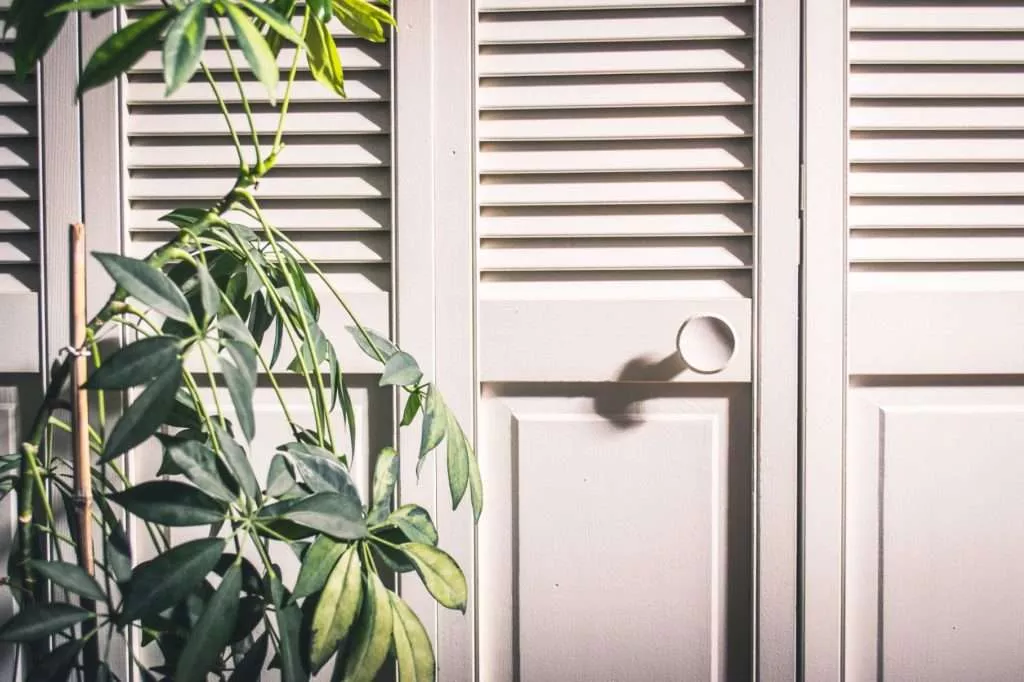
The bamboo palm does more than just clean the air, it also creates an atmosphere of calm and relaxation. The presence of plants has been found to have a positive effect on mental health and reduce stress. The bamboo palm is a beautiful addition to any decor because of its emerald-green leaves and graceful form.
Here are a few tips for keeping your bamboo palm healthy and thriving:
- Light: The bamboo palm loves indirect, bright light. Direct sunlight should be avoided since it might burn the foliage.
- Temperature: Keep your bamboo palm in a room that is 65 to 80 degrees Fahrenheit. This plant does not thrive in cold or dry climates.
- The bamboo palm prefers medium to high humidity levels. To improve humidity, consider using a humidifier or placing a tray of water near the plant.
- Watering: When the top inch of soil on your bamboo palm feels dry to the touch, water it. Overwatering can cause root rot, so be cautious.
- Soil: Use well-draining soil and consider adding peat moss or perlite to help with drainage.
Boston Fern
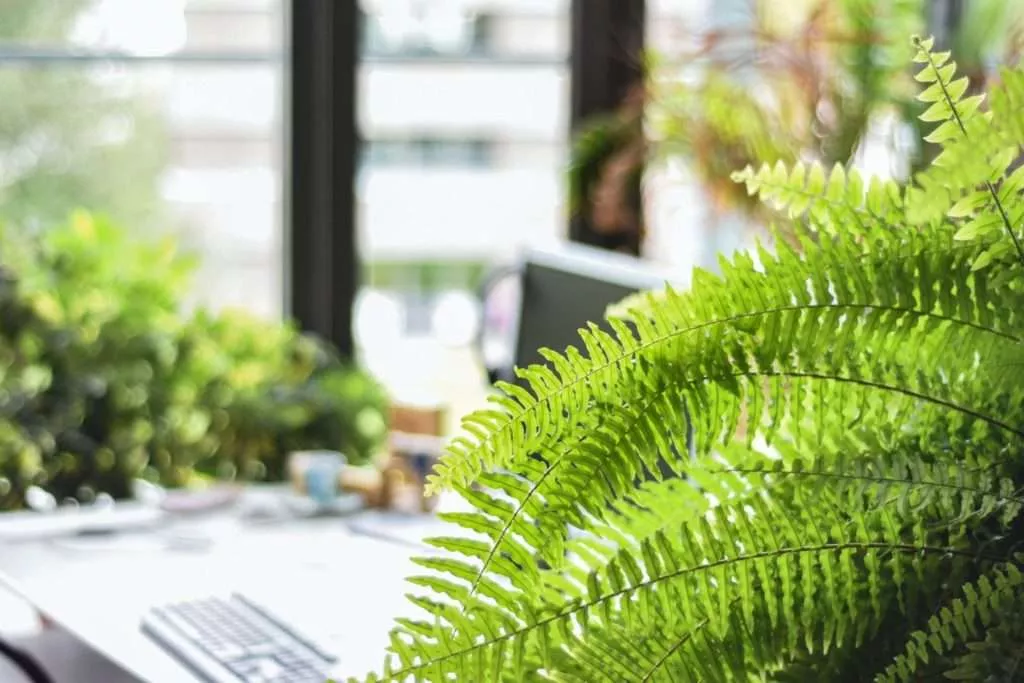

The Boston Fern is a good option for a gorgeous and easy-to-care-for houseplant. This rich, green plant can liven up any space and requires no care. The Boston Fern grows best in temperatures ranging from 65 to 75 degrees Fahrenheit. It requires at least two hours of bright, filtered, or indirect light every day, although direct sunlight can burn the leaves. Place your Boston fern in bright, indirect light if you’re growing it as a houseplant. The fronds will become bland and sparse if grown in too much shade.
However, too much sun might cause the fronds to burn. It is also critical to maintain high humidity levels, preferably around 80%, in order for the plant to grow. The Boston Fern is a lovely and easy-to-care-for houseplant that can liven up any space. Your Boston fern may thrive and offer delight for years to come with the proper growth conditions, watering, and fertilizing.
Chrysanthemum
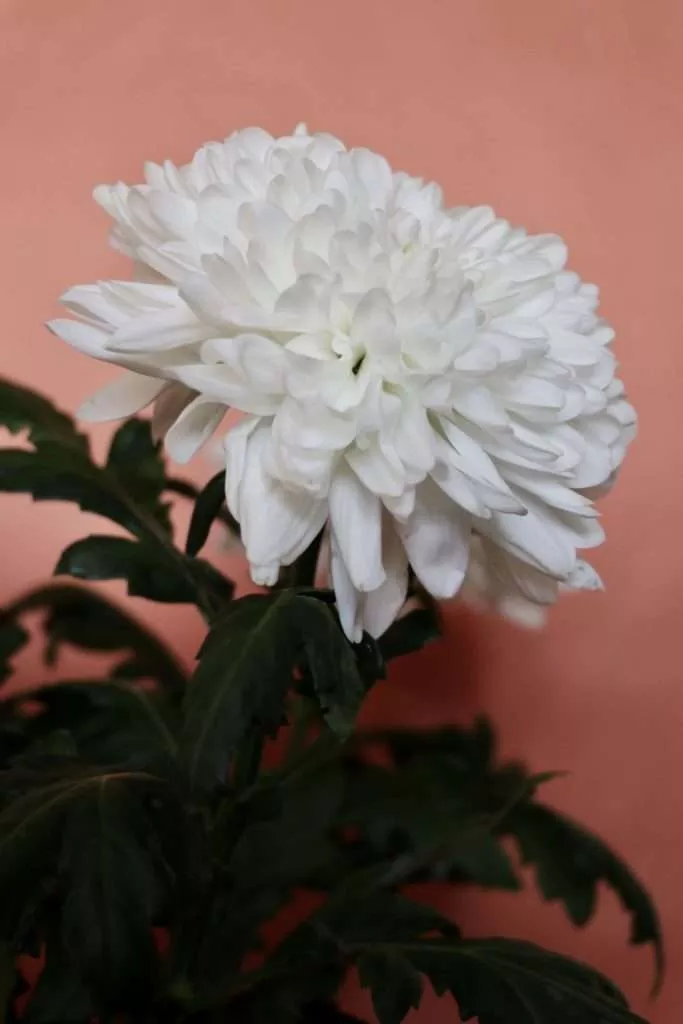
As a part of traditional Chinese medicine, chrysanthemums, or “mums,” are said to have a number of beneficial effects. According to studies, chrysanthemums have the potential to “cleanse heat and toxins” and “scatter cold.” Eye discomfort is only one of several medical issues that these flowers have been used to alleviate. Chrysanthemums are edible and are widely used in tea, which has a relaxing effect on the body. To make chrysanthemum tea, first dry the petals before making a teabag to contain them.
Indoors, chrysanthemums can enhance air quality, which can have a favourable influence on general well-being. Furthermore, the bright and lovely blossoms of chrysanthemums may add a touch of natural beauty to a living environment, promoting emotions of serenity and tranquilly.
English Ivy

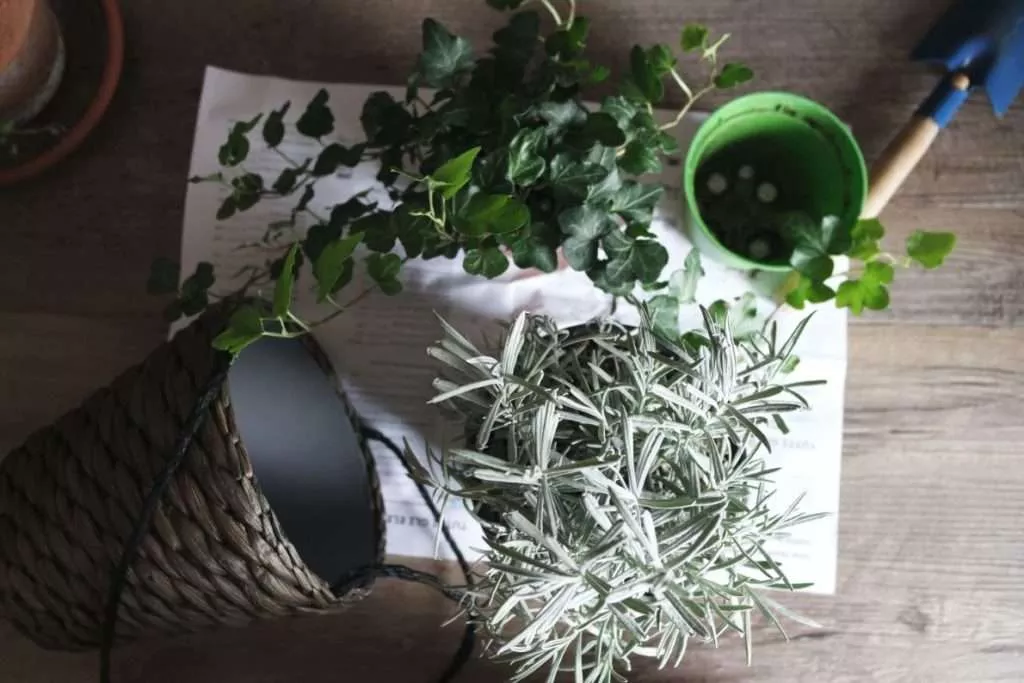

English ivy is a popular plant for creating a relaxing environment in the office. Because of its high concentration of polyphenols, saponins, and flavonoids, this plant possesses anti-inflammatory and antioxidant qualities. Use English ivy as a low-maintenance indoor plant to incorporate it into an office environment. Actively engaging with indoor plants has been demonstrated in studies to lower physiological and psychological stress, making them a wonderful complement to any working area. English ivy is simple to grow and maintain, making it an excellent choice for people looking to add some greenery to their workstation.
Gerbera daisy
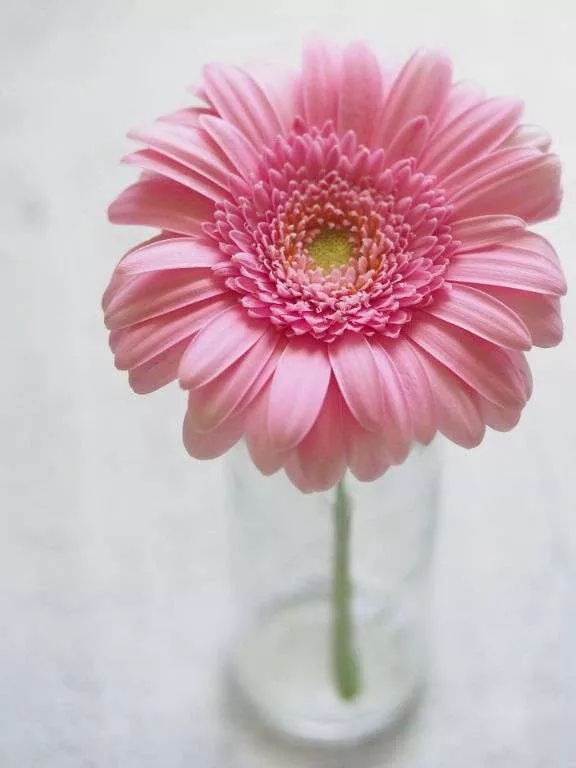
Bright and happy, Gerbera daisies are a great choice for brightening up a work space. Colors like red, pink, orange, and yellow, which are common in these designs, have been shown to have a calming effect and boost mood. In fact, the color yellow is connected with joy, hope, and vitality, all of which may contribute to a more upbeat and productive work environment.
Petal Republic says that Gerbera daisies represent happiness, beauty, innocence, and purity. If the top inch of soil is dry to the touch, give your Gerbera daisies a good soaking, but do your best to keep the leaves dry to avoid fungal illnesses. Gerbera daisies, like spider plants, require little attention and thrive in an office setting. They need full, indirect sunlight and an inch of water each week once the soil has dried up. When cared for properly, Gerbera daisies may bloom for weeks at a time, making them an ideal office plant.
Lavender
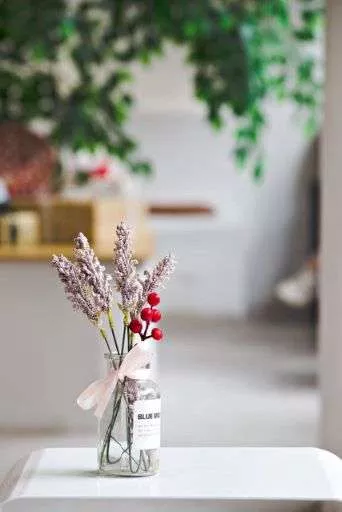
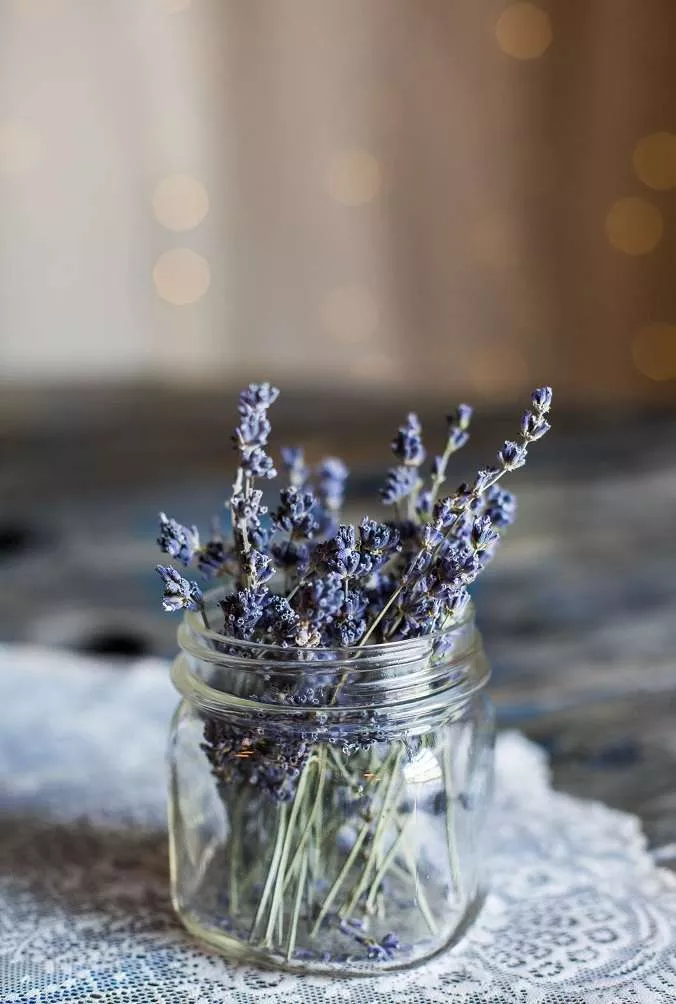
Lavender has various uses to soothe and relax. In tiny amounts, like a potted plant or essential oil diffuser, it may relax the office without being overbearing. Work breaks may be relaxing with lavender tea.
Lavender may be grown in a garden, diffused, or sprayed at home. Lavender candlelight and pillow spray might help relax before bed.
| Lavender at Office | Lavender at Home | |
| Plant | Keep a small potted Lavender plant on your desk or nearby | Grow Lavender plants in a pot or garden |
| Essential Oil | Use a Lavender essential oil diffuser or spray | Use Lavender essential oil in a diffuser or spray |
| Pillow Mist | Spray a Lavender pillow mist on your desk or in your workspace | Spray a Lavender pillow mist on your bedding |
| Tea | Drink Lavender tea during breaks or lunchtime | Drink Lavender tea before bedtime |
| Candles | Light a Lavender candle during work hours | Light a Lavender candle during relaxation time |
Peace Lily
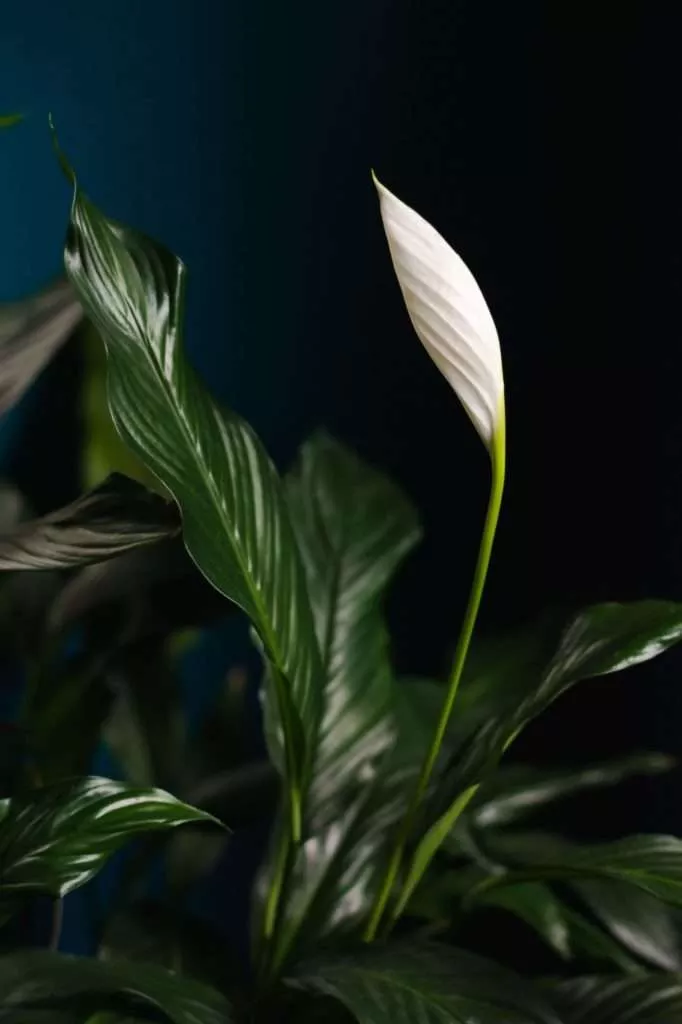

Peace lily helps you relax at home and at work. It purifies the air and reduces tension. Peace lily is a low-maintenance plant that adds greenery to a workstation or house without much effort.
A tiny peace lily on a desk or in the welcome area helps calm the office. The plant’s low light needs make it a good choice for dark offices. Peace lilies may bloom year-round in pots or gardens with appropriate care.
| Peace Lily at Office | Peace Lily at Home | |
| Plant | Place a small Peace Lily on your desk or in the reception area | Grow Peace Lily in a pot or garden |
| Air Purification | Use Peace Lily to improve air quality and reduce stress | Use Peace Lily to improve air quality and promote relaxation |
| Watering | Water once a week or when the top inch of soil feels dry | Water once a week or when the soil feels dry to the touch |
| Lighting | Requires low to moderate light, making it a great office plant | Prefers bright, indirect light, making it perfect for a sunny spot at home |
| Maintenance | Minimal care and maintenance required, making it an easy plant to care for at work | Requires slightly more maintenance and care at home, but still relatively low maintenance |
Rosemary
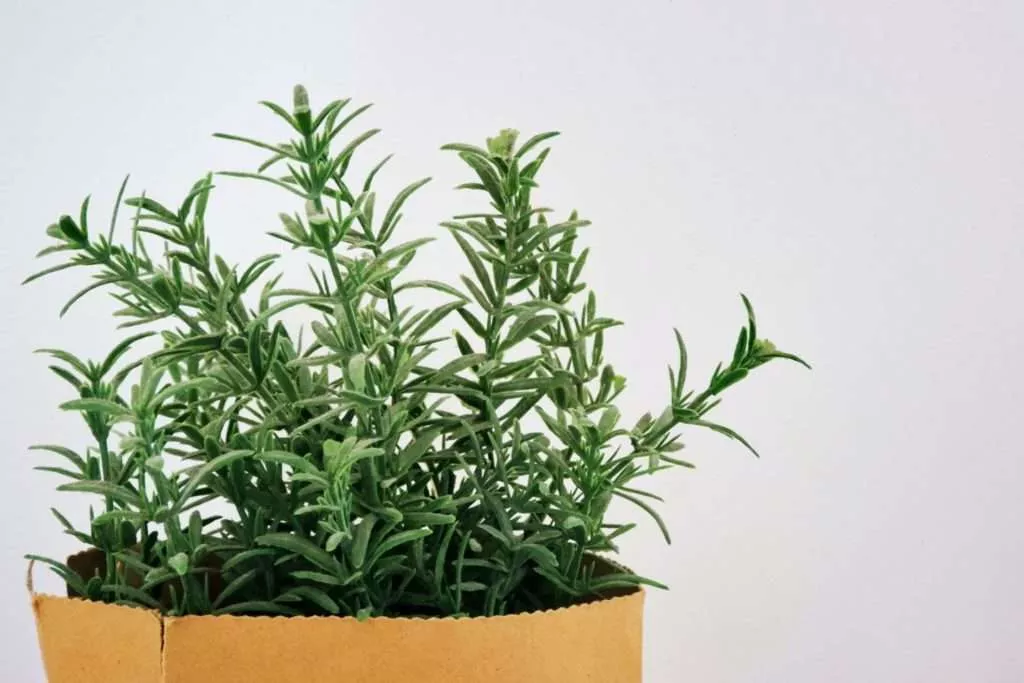
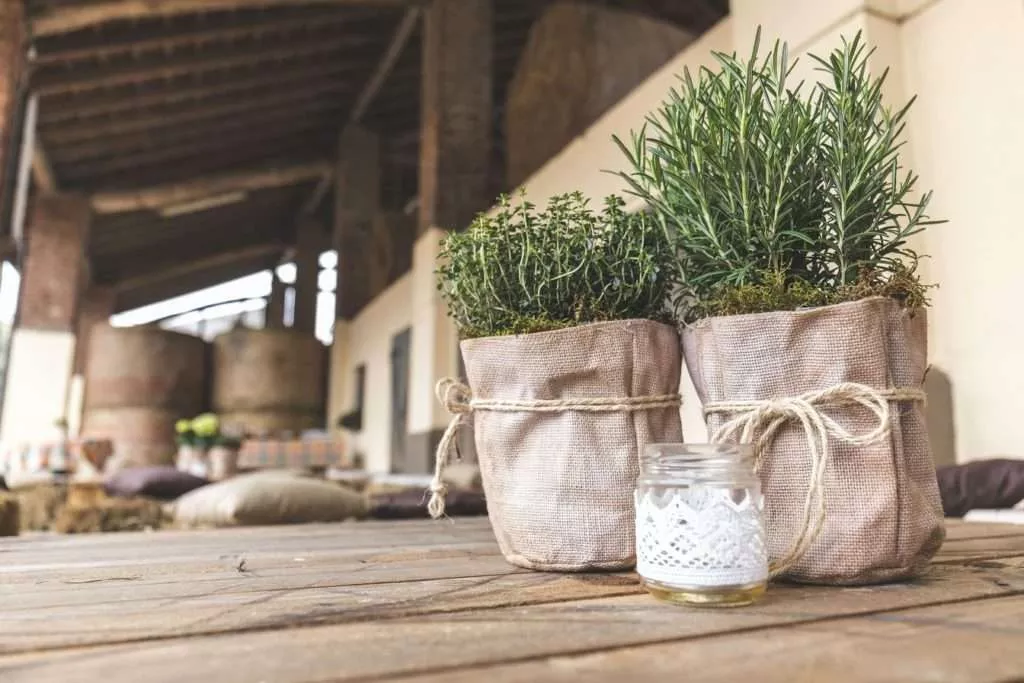
Rosemary is a multipurpose plant that helps in many ways, including boosting memory and protecting the body from illness. A relaxing effect can be achieved by keeping an Aglaonema plant at work and planting some rosemary in a sunny window sill or garden bed at home. While Aglaonema thrives in artificial light and may be kept in an office, rosemary needs to be pruned frequently to maintain its attractive form. Rosemary helps with focus and tension at home, while Aglaonema is great for the office’s air quality.
How to use rosemary for a calming effect at the office and home.
| Office | Home | |
| Plant Type | Aglaonema | Rosemary |
| Placement | Desk, shelf, or table | Sunny window sill or garden bed |
| Care | Low maintenance, adaptable to low or bright light levels | Regular watering, well-draining soil, and pruning for optimal growth and shape |
| Benefits | Provides a calming presence and promotes better air quality in the office environment | Helps improve concentration and reduces stress in a home environment |
Rubber Plant
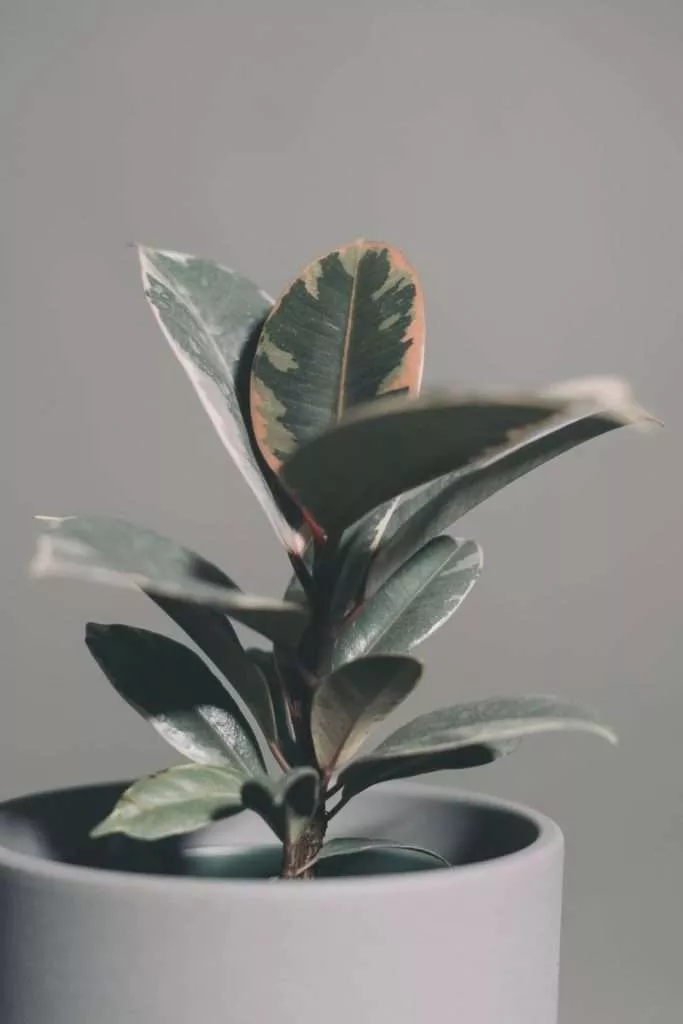
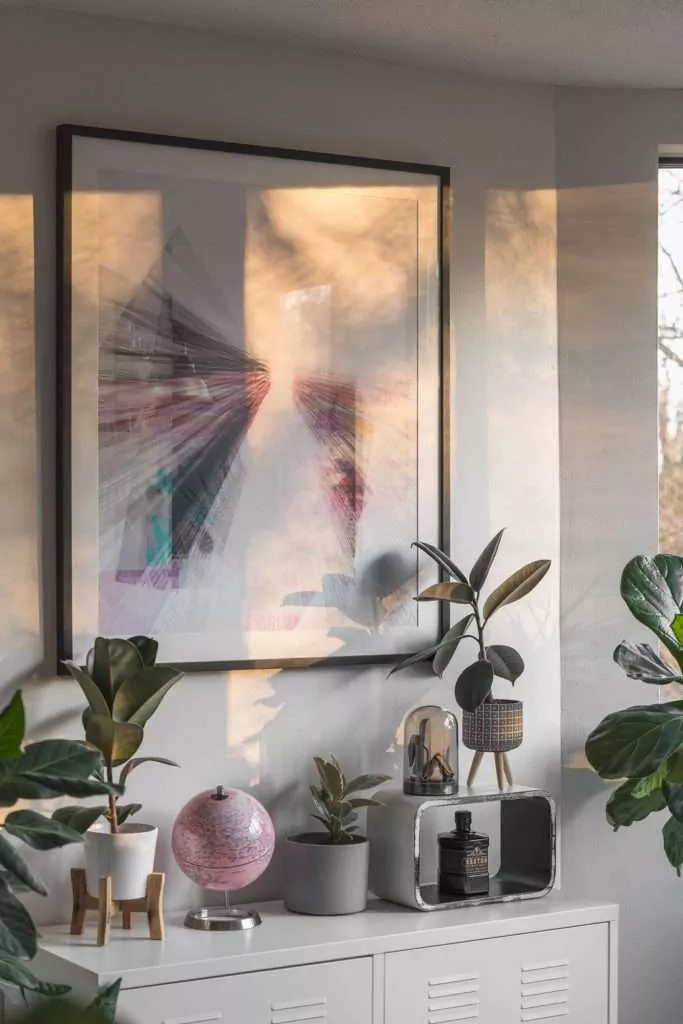
Rubber plants are popular indoor plants that bring nature to companies and homes. Keeping your rubber plant healthy requires several steps.
Basic care instructions for a rubber plant in both office and home settings.
| Care Instruction | Office | Home |
| Watering | When the dirt on your rubber plant seems somewhat dry to the touch, water it. Overwatering may promote foliage yellowing, so avoid it. Remove the saucer from under the pot so that there is no standing water. | Water your rubber plant when the soil is slightly dry to the touch. Overwatering may promote foliage yellowing, so avoid it. Remove the saucer from under the pot so that there is no standing water. |
| Lighting | Place your rubber plant in a bright, indirect light position. Direct sunlight should be avoided since it might burn the foliage. | Place your rubber plant in a sunny spot with indirect sunlight. Avoid direct sunshine, which may burn the foliage. |
| Fertilizing | Feed your rubber plant a general-purpose fertilizer at 1/4 to 1/2 strength several times a year, particularly during vigorous growth in spring and summer. | Feed your rubber plant a general-purpose fertiliser at 1/4 to 1/2 strength a few times a year, particularly during vigorous growth in spring and summer. |
Top 14 Calming Plants for the Office: Size, Light, Temperature, Color, and Cost Comparison
| Plant Name | Size (Dimensions) | Lighting and Temperature | Color | Price Range |
| Aloe Vera | Small to medium-sized (20-60 cm tall, 15-30 cm wide) | Bright, indirect sunlight and temperatures between 15-27°C (60-80°F) | Green, sometimes with white spots on the leaves | $10-$30 |
| Bamboo Palm | Medium-sized (90-180 cm tall, 60-90 cm wide) | Bright, indirect sunlight and temperatures between 18-26°C (65-80°F) | Green | $40-$80 |
| Boston Fern | Small to medium-sized (30-90 cm tall, 30-60 cm wide) | Bright, indirect sunlight and temperatures between 15-27°C (60-80°F) | Green | $20-$40 |
| Chrysanthemum | Small to medium-sized (15-45 cm tall, 15-30 cm wide) | Bright, direct sunlight and temperatures between 15-27°C (60-80°F) | Various colors, including white, yellow, pink, and red | $15-$25 |
| English Ivy | Small to medium-sized (30-60 cm tall, 30-60 cm wide) | Bright, indirect sunlight and temperatures between 15-26°C (60-80°F) | Variegated green and white | $20-$40 |
| Gerbera Daisy | Small to medium-sized (30-45 cm tall, 15-30 cm wide) | Bright, direct sunlight and temperatures between 18-26°C (65-80°F) | Various colors, including red, orange, pink, and yellow | $15-$30 |
| Golden Pothos | Small to medium-sized (30-90 cm tall, 30-60 cm wide) | Low to bright, indirect sunlight and temperatures between 15-30°C (60-85°F) | Variegated green and yellow | $10-$30 |
| Jasmine | Small to medium-sized (30-90 cm tall, 30-60 cm wide) | Bright, indirect sunlight and temperatures between 15-27°C (60-80°F) | White or yellow, sometimes with a pink tint | $20-$40 |
| Lavender | Small to medium-sized (20-60 cm tall, 15-30 cm wide) | Bright, direct sunlight and temperatures between 18-27°C (65-80°F) | Purple | $15-$30 |
| Peace Lily | Small to medium-sized (30-60 cm tall, 30-60 cm wide) | Low to bright, indirect sunlight and temperatures between 18-27°C (65-80°F) | White | $15-$35 |
| Rosemary | Small to medium-sized (20-60 cm tall, 15-30 cm wide) | Bright, direct sunlight and temperatures between 18-24°C (65-75°F) | Green with blue flowers | $10-$30 |
| Rubber Plant | Medium to large-sized (60-120 cm tall, 30-60 cm wide) | Medium to bright, indirect sunlight and temperatures between 18-24°C (65-75°F) | Dark green | $30-$60 |
| Snake Plant | Small to medium-sized (30-90 cm tall, 15-30 cm wide) | Low to bright, indirect sunlight and temperatures between 16-27°C (60-80°F) | Green and yellow | $15-$35 |
| Spider Plant | Small to medium-sized (15-60 cm tall, 15-30 cm wide) | Low to bright, indirect sunlight and temperatures between 15-27°C (60-80°F) | Variegated green and white | $10-$25 |
- Note: The appropriate lighting and temperature conditions for each plant and workplace setting may vary.
- Depending on where you buy the plant and where you live, the price range might be higher or lower.




